
Andries Both, was a Dutch genre painter. He was part of the group of Dutch and Flemish genre painters active in Rome in the 17th century known as the bamboccianti, who painted scenes from the everyday life of the lower classes in Rome and its countryside.
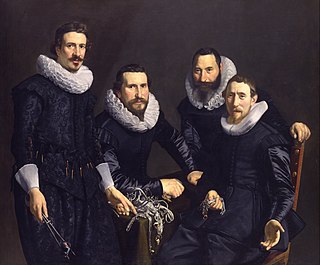
Thomas de Keyser was a Dutch portrait painter and a dealer in Belgium bluestone and stone mason. He was the most in-demand portrait painter in the Netherlands until the 1630s, when Rembrandt eclipsed him in popularity. Rembrandt was influenced by his work, and many of de Keyser's paintings were later falsely attributed to Rembrandt.
Vermeulen is a Dutch toponymic or occupational surname, meaning "from the (wind/water) mill". It is a contraction of the surname Van der Meulen. In the Netherlands 20,633 people carried the name in 2007, making it the 30th most common surname, while in Belgium 13,552 people were named Vermeulen in 2008, making it the 11th most common name there.

Bartholomeus van der Helst was a Dutch painter. Considered to be one of the leading portrait painters of the Dutch Golden Age, his elegant portraits gained him the patronage of Amsterdam's elite as well as the Stadtholder's circle. Besides portraits, van der Helst painted a few genre pictures as well as some biblical scenes and mythological subjects.
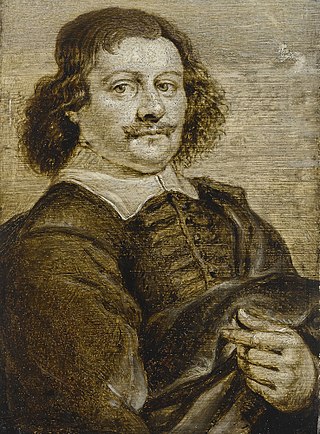
Jan Dirksz Both was a Dutch painter, draughtsman, and etcher, who made an important contribution to the development of Dutch Italianate landscape painting.

Events in the year 1814 in Art.
Events from the year 1763 in art.
Events from the year 1648 in art.

Andries van Eertvelt (1590–1652), was a Flemish painter, draughtsman and engraver who was one of the first Flemish artists to specialize in marine art. Several of his pupils also became prominent marine artists.
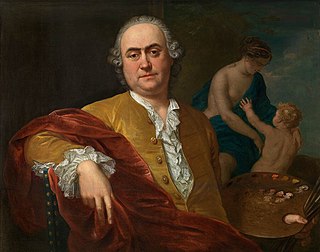
Balthasar Beschey was a Flemish painter, draughtsman and decorative painter of interiors. He started his career as landscape painter but later on switched to history and portrait painting. He played a prominent role in the development of the Academy of Arts in Antwerp and as a teacher.

Johannes Glauber, was a Dutch Golden Age painter.

Philips Augustijn Immenraet was a Flemish landscape painter and engraver. While staying largely within the traditional scheme of the Flemish Baroque landscape, Immenraet introduced a new brightness and broke with the traditional compositional scheme of obliquely receding planes. His best works already display a pre-Romantic character.
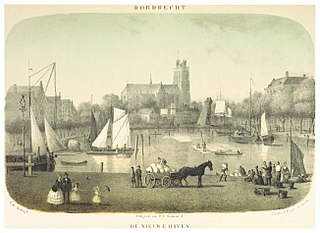
Leendert de Koningh, was a Dutch marine and landscape painter De Koningh was instructed by A. Vermeulen and M. Versteeg, and in 1801 came to England, but in 1803 was compelled to leave that country on account of the War of the Third Coalition. He then went to Paris, and studied under David. Thence he returned home by way of Germany. In 1816, he paid a second visit to England, but he basically spent the rest of his life in his hometown.

Gaspar or Casper van Eyck was a Flemish painter of marine subjects and sea-fights. He worked in Antwerp and spent some time working in Genoa and Madrid.

Cornelis Vermeulen or Cornelis Martinus Vermeulen was a Flemish printmaker who is mainly known for his portraits, reproductive prints, frontispieces and illustrations. He trained in Antwerp and worked a number of years in Paris.
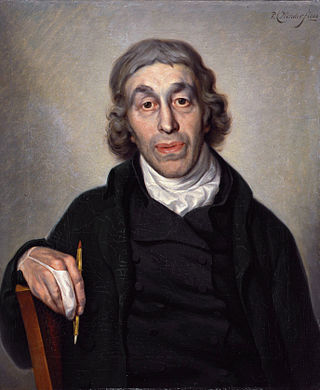
Jacob van Strij was a Dutch painter, printmaker, and draftsman who was mainly interested in landscape painting, including mountain landscapes, winter landscapes and marines.
Jacob Andries Beschey was a Flemish painter and draughtsman who mainly painted religious paintings that were in the style of, or inspired by, Peter Paul Rubens.
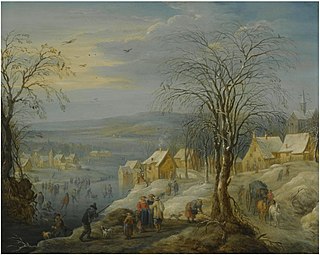
Carel Beschey or Karel Beschey was a Flemish painter and draughtsman who mainly painted landscapes that were in the style of, or inspired by, the Flemish masters of the previous century and in particular Jan Brueghel the Elder.
Andries is a Dutch and Afrikaans masculine given name or surname equivalent to Andrew.

Andries de Coninck or Andries de Koninck was a Flemish art dealer and still life painter active in Antwerp. He is known for his pronkstillevens, the still lifes that were popular in Flanders and the Dutch Republic from the 1640s.















